Reading to Understand
- Reading to Understand (8 minutes)
- Working with Context Clues (5 minutes)
- The Main Idea

Steps for Identifying the Main Idea
- Knowledge Check
- Academic Reading Challenges (7 minutes)
The main idea is the point or message - what an author presents and what a reader takes from a text.
Searching for that main idea is a very important activity in understanding a text. It is usually found in the opening paragraph when the author is setting up the topic and expressing the thesis.
However, the location can vary according to the type of reading. For example, a research article's main idea is toward the end, whereas a persuasive essay's main idea is conveyed at the beginning.

Pre-read to Determine the Overall Topic
Examine the title and then skim the text to determine who or what the reading is about. If you see the same word repeated you know that it is likely the topic or at least an important element of the topic. The topic should be a noun or a noun phrase such as "online education." The topic itself does not convey any meeting us you must read on to determine the main idea.
Ask yourself questions about the text as you read in-depth. Pay close attention to the introduction, the first sentence of body paragraphs, and the conclusion. In these places, the author typically states and supports the main idea.
Questions to Ask Yourself While Reading :
- What elements make up this topic?
- What is the author saying about this topic?
- What does the author want me to know or believe about this topic?
Reflect on what you have read. If the main idea is not immediately apparent to you review the introduction and conclusion. The main idea should be a complete thought such as "because of its flexibility, comfort, and lower-cost online education is increasing in popularity for younger generations."
Questions to Ask Yourself While Reflecting:
- What is the message I take away from this reading?
- What point does the information add up to?
- What idea does the author reinforce in the conclusion?
- What is the final impression I have about this topic?
Finding the Main Idea
Once you believe you have found the main idea, check that each body paragraph relates to that main idea. The body paragraph should include supporting ideas that reinforce and provide greater detail about the main idea.
Some students find it beneficial to sketch the main idea and supporting ideas in their notes as a concept map.

- Previous Page: Working with Context Clues (5 minutes)
- Next Page: Academic Reading Challenges (7 minutes)
- Office of Student Disability Services
Walden Resources
Departments.
- Academic Residencies
- Academic Skills
- Career Planning and Development
- Customer Care Team
- Field Experience
- Military Services
- Student Success Advising
- Writing Skills
Centers and Offices
- Center for Social Change
- Office of Academic Support and Instructional Services
- Office of Degree Acceleration
- Office of Research and Doctoral Services
- Office of Student Affairs
Student Resources
- Doctoral Writing Assessment
- Form & Style Review
- Quick Answers
- ScholarWorks
- SKIL Courses and Workshops
- Walden Bookstore
- Walden Catalog & Student Handbook
- Student Safety/Title IX
- Legal & Consumer Information
- Website Terms and Conditions
- Cookie Policy
- Accessibility
- Accreditation
- State Authorization
- Net Price Calculator
- Cost of Attendance
- Contact Walden
Walden University is a member of Adtalem Global Education, Inc. www.adtalem.com Walden University is certified to operate by SCHEV © 2024 Walden University LLC. All rights reserved.
- Resources ›
- For Students and Parents ›
- Homework Help ›
- Study Methods ›
How to Find the Main Idea
ThoughtCo / Mary McLain
:max_bytes(150000):strip_icc():format(webp)/kr01-56a946be5f9b58b7d0f9d8d0.jpg)
- B.A., English, University of Michigan
Questions about the "main idea" of a story or passage are popular on reading comprehension tests.But sometimes, those questions are pretty difficult to answer, especially for students who are not completely sure they understand what the main idea really is. Finding the main idea of a paragraph or longer passage of text is one of the most important reading skills to master, along with concepts like making an inference , finding the author's purpose , or understanding vocabulary words in context.
Here are a few techniques to help understand what is a "main idea" and how to identify it accurately in a passage.
How to Define the Main Idea
The main idea of a paragraph is the primary point or concept that the author wants to communicate to the readers about the topic. In a paragraph, when the main idea is stated directly, it is expressed in what is called the topic sentence . It gives the overarching idea of what the paragraph is about and is supported by the details in subsequent sentences in the paragraph. In a multi-paragraph article, the main idea is expressed in the thesis statement, which is then supported by individual smaller points.
Think of the main idea as a brief but all-encompassing summary. It covers everything the paragraph talks about in a general way, but does not include the specifics. Those details will come in later sentences or paragraphs and add nuance and context; the main idea will need those details to support its argument.
For example, imagine a paper discussing the causes of World War I . One paragraph might be dedicated to the role that imperialism played in the conflict. The main idea of this paragraph might be something like: "Constant competition for massive empires led to increasing tensions in Europe that eventually erupted into World War I." The rest of the paragraph might explore what those specific tensions were, who was involved, and why the countries were seeking empires, but the main idea just introduces the overarching argument of the section.
When an author does not state the main idea directly, it should still be implied and is called an implied main idea. This requires that the reader look closely at the content—at specific words, sentences, and images that are used and repeated—to deduce what the author is communicating.
Finding the main idea is critical to understanding what you are reading. It helps the details make sense and have relevance and provides a framework for remembering the content. Try these specific tips to catch the main idea of a passage.
1) Identify the Topic
Read the passage through completely, then try to identify the topic. Who or what is the paragraph about? This part is just figuring out a topic like "cause of World War I" or "new hearing devices;" don't worry yet about deciding what argument the passage is making about this topic.
2) Summarize the Passage
After reading the passage thoroughly, summarize it in your own words in one sentence . Pretend you have just ten to twelve words to tell someone what the passage is about—what would you say?
3) Look at the First and Last Sentences of the Passage
Authors often put the main idea in or near either the first or last sentence of the paragraph or article, so isolate those sentences to see if they make sense as the overarching theme of the passage. Be careful: sometimes the author will use words like but , however , in contrast , nevertheless , etc. that indicate that it's the second sentence is actually the main idea. If you see one of these words that negates or qualifies the first sentence, that is a clue that the second sentence is the main idea.
4) Look for Repetition of Ideas
If you read through a paragraph and you have no idea how to summarize it because there is so much information, start looking for repeated words, phrases, or related ideas. Read this example paragraph :
A new hearing device uses a magnet to hold the detachable sound-processing portion in place. Like other aids, it converts sound into vibrations, but it is unique in that it can transmit the vibrations directly to the magnet and then to the inner ear. This produces a clearer sound. The new device will not help all hearing-impaired people—only those with hearing loss caused by infection or some other problem in the middle ear. It will probably help no more than 20 percent of all people with hearing problems. Those people who have persistent ear infections, however, should find relief and restored hearing with this new device.
What does this paragraph consistently talk about? A new hearing device. What is it trying to convey? A new hearing device is now available for some, but not all, hearing-impaired people. That's the main idea!
Avoid Main Idea Mistakes
Choosing a main idea from a set of answer choices is different than composing a main idea on your own. Writers of multiple-choice tests are often tricky and will give you distractor questions that sound much like the real answer. By reading the passage thoroughly, using your skills, and identifying the main idea on your own, though, you can avoid making these three common mistakes : selecting an answer that is too narrow in scope; selecting an answer that is too broad; or selecting an answer that is complex but contrary to the main idea.
Resources and Further Reading
- How to Find a Stated Main Idea
- How to Find an Implied Main Idea
- Finding the Main Idea Practice
- Finding Main Ideas In Paragraphs
- Finding the Main Idea, Columbia College
Updated by Amanda Prahl
- How to Outline a Textbook Chapter
- The Case for the Importance of Taking Notes
- How to Remember What You Read
- How to Study With Flashcards
- How to Study for a Multiple Choice Exam
- How to Study for an Open Book Test
- How to Focus on Studying
- How to Study the Night Before a Test
- Study Tips for Better Grades
- Study Habits That Can Improve Grades and Performance
- The Right Way to Cram for a Test
- Best Pandora Stations for Studying
- How to Diagram a Sentence
- How to Study for Objective Test Questions
- Understanding the SQ3R Study Strategy
- How Long Should You Study a Subject?
Understanding & Interacting with a Text

Finding the main idea in a piece of writing is a basic reading skill. No matter what type of expository text you read, the primary comprehension goal is to identify the main idea: the most important point that the writer wants to communicate. Main ideas are often stated toward the start of a text, usually in an introductory paragraph. They are often repeated in fuller form toward the end of a text, usually in a concluding paragraph. Main ideas may be reinforced through headings, subheadings, and other forms of emphasis. However, main ideas may also be implied and not stated directly in the text. Sometimes you need to infer the main idea based on the details, facts, and explanations in the text.
Some texts make the task of identifying the main idea relatively easy. Articles in scholarly journals often include an abstract, which is a condensed version of the information in the article, a version which focuses on main ideas. Textbooks, articles in general interest magazines, and online articles in blogs or on websites may include headings and subheadings which make it easier to identify core concepts. All types of texts may include graphic features such as sidebars, diagrams, and charts, which help readers understand complex information and distinguish between essential and inessential points. When reading a text with these features, use them to help identify the main idea.
For texts without graphic features, headings, or abstracts, and/or for texts with implied main ideas, use the following process to identify the main idea:
- Read the text.
- Ask yourself: What is the text about? – What is the topic?
- Ask yourself: What is the author saying about the topic?
- Identify repeated concepts and language; writers often use repetition to emphasize a main idea.
- Summarize the article after you read–put what you think the main idea is into your own words. See if you can find any statements in the article that are similar to your summary. If so, it’s likely that you’ve found the main idea. If the main idea in the text is not stated but implied, then ask if your summary encapsulates the one thing you think the writer wants you to understand about the topic.
For a discussion of finding the main idea which includes examples, link to Finding the Main Idea from Monterey Peninsula College’s Writing Center.
The following two videos also provide very clear, useful discussions of finding the main idea in a text.
Read the article, “ Wikipedia Is Good for You!? ” Then choose the statement that you think best offers the main idea. In the answer, you’ll also find one reader’s discussion of her thought process finding the main idea.
- Wikipedia is a good source in certain cases.
- Wikipedia, although itself not always a valid source, is useful as a starting place for ideas, search terms, and other sources.
- Wikipedia, although itself not always a valid source, is useful both as a starting place and as a process guide to producing a text.
The third choice best offers the article’s main idea. I knew that the main idea would have something to do with the topic “Wikipedia,” because of the title. But because the title included a question mark, I didn’t know if the main idea would end up being for or against Wikipedia. Immediately after I skimmed, I thought that the main idea was stated directly in paragraph 12: “ There are productive ways to use Wikipedia. In fact, Wikipedia can be a good source in three different ways. Rather than a source to cite, it can be a source of (1) ideas, (2) links to other texts, and (3) search terms. ” But when I read more fully, I realized that there were other things the author wanted me to understand, concepts more complex and nuanced than a direct “yes” or “no” answer to the title. I found key ideas relating to the benefits of Wikipedia in paragraphs 2 and 4 in addition to 12. Paragraphs 2 and 4 discussed Wikipedia in terms of writing processes: the need to go back and revise, the co-production of an article’s text based on input from many sources (a “conversation”), and the concept of writing for a real audience. There are also a number of paragraphs that talk about the detriments of Wikipedia if used as a source. Since there’s no single main idea sentence, I summarized the main concepts into a sentence that condensed and synthesized the article’s ideas into one main idea statement.
- Main Idea. Authored by : Susan Oaks, includes material adapted from Let's Get Writing; attribution below. Project : Introduction to College Reading & Writing. License : CC BY-NC-SA: Attribution-NonCommercial-ShareAlike
- Chapter 1 - Critical Reading. Authored by : Elizabeth Browning, Kirsten DeVries, Kathy Boylan, Jenifer Kurtz, and Katelyn Burton. Provided by : Virginia Western Community College. Located at : https://vwcceng111.pressbooks.com/chapter/chapter-1-critical-reading/ . Project : Let's Get Writing. License : CC BY-NC-SA: Attribution-NonCommercial-ShareAlike
- image of woman thinking, with question mark. Authored by : Tumisu. Provided by : Pixabay. Located at : https://pixabay.com/photos/question-doubt-problem-mark-3385451/ . License : CC0: No Rights Reserved
- video Location of the Main Idea Sentence. Authored by : Marc Franco. Provided by : Snap Language. Located at : https://www.youtube.com/watch?v=U0yZ8z7lt3Q . License : Other . License Terms : YouTube video
- video Implied Main Ideas and a Reading Strategy to Figure them Out. Authored by : Marc Franco. Provided by : Snap Language. Located at : https://www.youtube.com/watch?v=wydDRf3XEb8 . License : Other . License Terms : YouTube video

Privacy Policy

Identifying the main idea of the story: A Guide for Students and Teachers
READING FOR MEANING: IDENTIFYING THE MAIN IDEA OF THE STORY
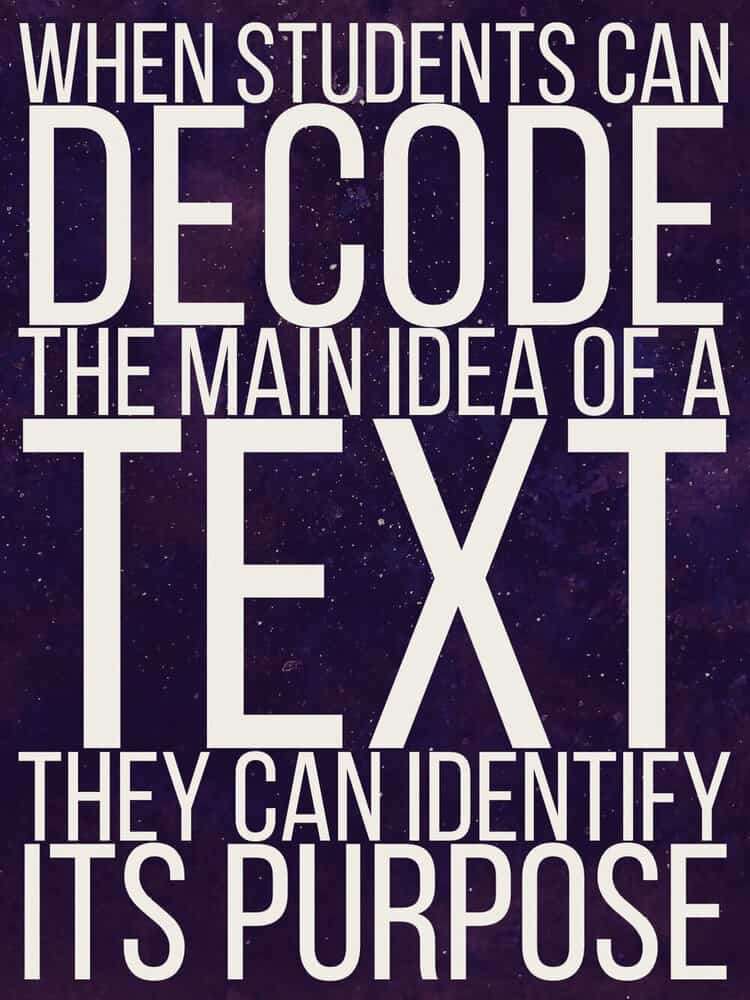
We have all been there, though it can often feel as futile as the search for that proverbial needle in a haystack…
Finding the main idea of a piece of writing can be challenging, but it is an essential reading comprehension skill for our students to develop. Students that become skilled in this art will benefit from it far beyond the perimeters of the school gates. From the small print of an insurance document to writing a book review, the ability to filter a text and identify its central idea is as much a crucial life skill as an essential literacy-based learning objective. Though it isn’t always easy, luckily, there is much we can do to help our students hone their abilities in this area.
WHAT IS ‘THE MAIN IDEA’? DEFINITION
Whether we are talking about the main idea of a paragraph, a poem, a chapter, or a longer text, finding the main idea requires the reader to identify the topic of a piece of writing and then uncover what the writer wants us to know about that topic.
As is so often the case, it is best to start small. When working with students on how to identify the main idea, begin by having students locate the main idea in a sentence before building up to locating it in a longer paragraph. As students gradually build their confidence in identifying the main idea in paragraphs, they will soon be ready to move on to longer texts in the form of chapters and eventually full-length books.
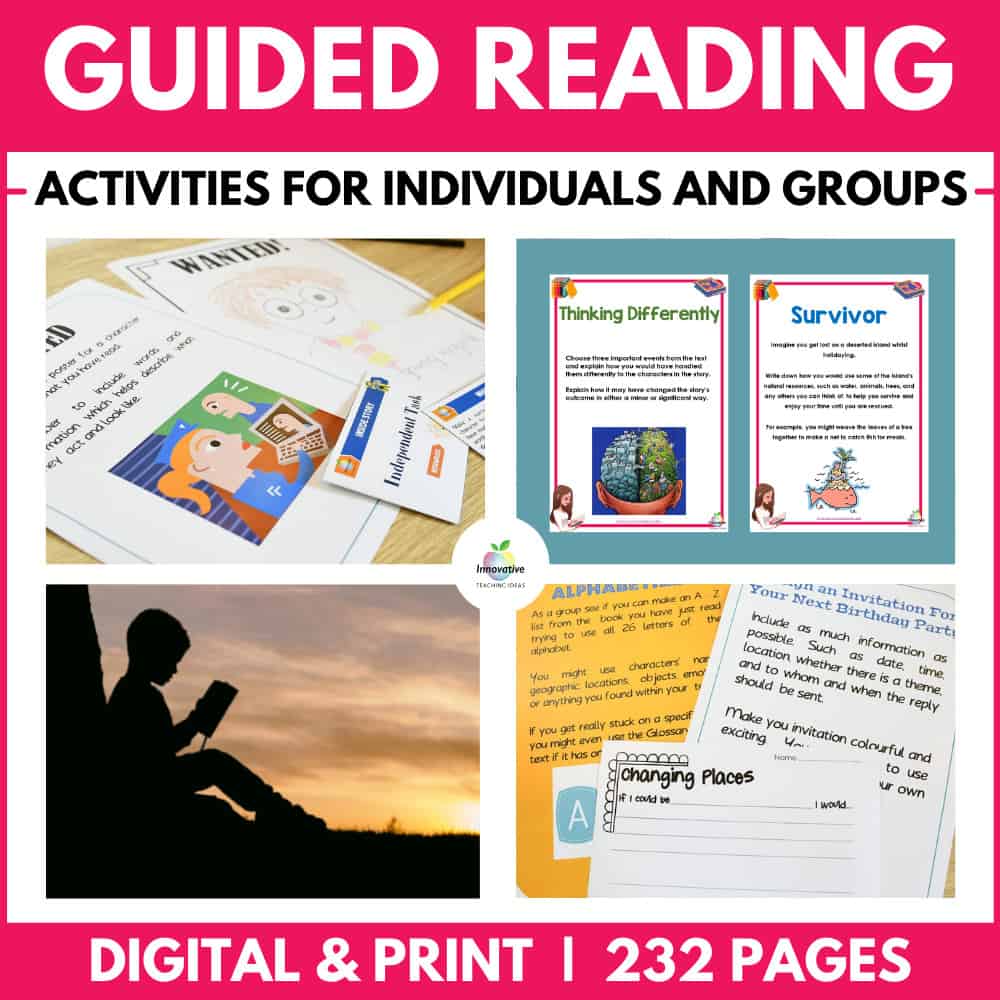
125 Guided Reading Activities
Ensure your students are constantly engaged with these INDEPENDENT & GROUP Reading Activities for ANY BOOK.
⭐⭐⭐⭐⭐ ( 215 reviews )
A WORD ON PARAGRAPHS

The main idea of a sentence is usually fairly straightforward to identify. Often it is as simple as identifying the subject of the sentence. Whole chapters or books, on the other hand, can seldom be easily reduced to expression in the form of a single, main idea. For these reasons, the paragraph offers the student the most suitable format in which to practice their main idea identification skills.
Usually, if the writer knows what they are doing, we can identify a single main idea in every paragraph. We can think of this as the key point that is usually expressed as a topic sentence. It is often found in the paragraph’s first sentence, with subsequent sentences providing the supporting details. It can, however, occur in the middle, at the end, or even be split across the paragraph. It may not even be there at all – at least not explicitly.
Writers are a creative bunch, and so students will require more sophisticated means to accurately identify the main idea in all cases and that is exactly what this article will help you help your students to do.
HOW IS A MAIN IDEA EXPRESSED?
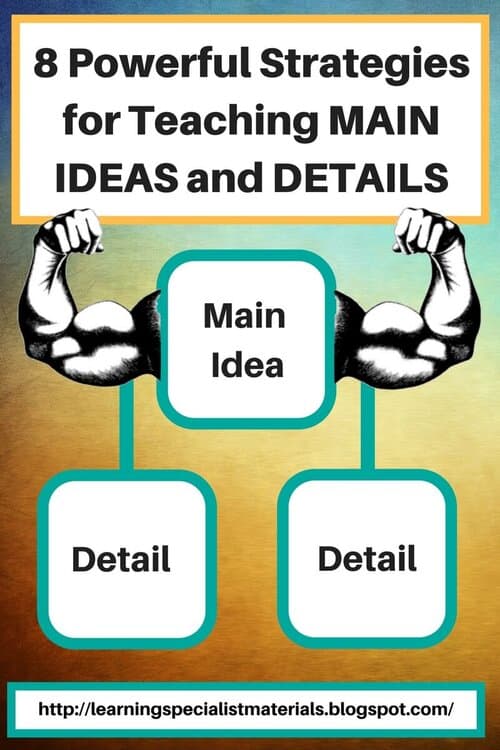
It can appear to be a reasonably clear-cut task to define the main idea, so why is it often so problematic for students to identify it? Well, the truth is that it needn’t be so. Often the central concept is expressed directly in the text and is as easy to identify as your own face in the mirror.
However, the main idea will not always be expressed so explicitly, and students must learn to identify it, whether it is expressed directly or merely implied, if they are to fully comprehend what they are reading.
THE STATEMENT OF THE MAIN IDEA
Attention is the key to pulling the main idea from a text, whatever the genre. Students need to identify the most relevant information from the work and use it to develop a statement expressing what they perceive as the main idea.
We can refer to this as The Statement of the Main Idea . This statement should be a lean sentence or two. The process of composing this statement starts with asking questions about the text. Not all questions will apply to every text, but they will provide a good starting point for extracting the main idea from any piece of writing.
● Who – Can the student identify the person or people the text is about?
● What – Can the student identify the topic or underlying theme of the text?
● When – Can the student identify a reference to a specific time or period?
● Where – Can the student identify a specific place or a setting ?
● Why – Can the student identify a reason or explanation for what happens in the text?
● How – Can the student identify a method or theory in the text?
These questions, and variations of these questions, can help students draw out what the text is about. The two most important questions of those above are who and what . These will sufficiently elicit the information required to identify the main idea in most circumstances. But, the actual litmus test of whether the student can absorb the text’s central idea is whether or not they can summarize what they have read in their own words.
The Litmus Test: Summarizing and Paraphrasing
We know through our experience in the classroom that learning through teaching is a highly effective instructional strategy. It also offers teachers opportunities to observe and assess their students’ grasp of the concepts they have been working on. Similarly, when we ask our students to summarize or paraphrase the main idea of an extract, we are creating an opportunity to observe their comprehension of what they have read and their ability to identify the main idea therein.
You can also encourage students to regularly practice these skills by challenging them to paraphrase and summarize things you have said or read to them in class, even during lessons entirely unrelated to literacy. Encourage them to be concise and to the point; you may even wish to set a word limit of 10 or 15 words within which they must express the main idea. Keep it lean!
STRATEGIES FOR SUCCESS IN IDENTIFYING THE MAIN IDEA
Get The Gist
In this method, give each student a copy of a nonfiction paragraph. If you wish, you can differentiate for students’ different abilities by choosing extracts of varying complexities. Regardless of the level of difficulty, the approach will remain the same. Have students:
1. Ask themselves who or what the paragraph is about.
2. Ask themselves what is the most essential information about the who or what.
3. Restate the main idea in 10 words or less.
You can model this strategy for your students by first walking them through the process. Project the text onto the whiteboard for shared reading and, with focused support and prompting, have them answer the initial questions.
Part 3 of the process above can be undertaken as a piece of shared writing which will model the correct approach before students begin to do it independently. Later, when students have written independent statements of the main idea, they can compare their responses and offer each other feedback. After feedback sessions, they can be given a further opportunity to redraft and modify their statements for accuracy and brevity.
Through these processes, students will improve their ability to identify and express the main idea clearly and concisely.
Get the Gist – Longer Texts
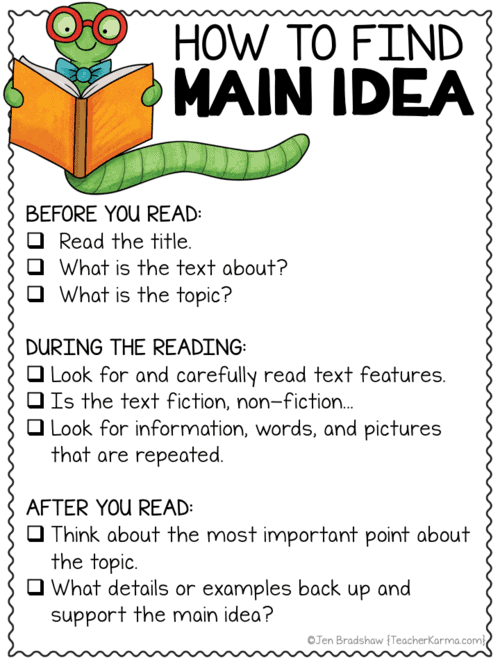
As we mentioned earlier, it isn’t always easy to reduce a longer extract, such as a chapter, down to a single central idea – much less a whole book! There will be times, however, when students will be asked to do just that. They will need a systematic approach to help them in such circumstances. The following process provides for a practical approach:
1. Look at the title – Often, the title provides a good indication of the topic of the text or at least helps to orientate the reader in the direction of the main idea.
2. Look at the extract’s first and last sentences/paragraphs – Often, the main idea will be introduced and summarized respectively in these parts of the text.
3. Look for repeated words and phrases in the extract -The frequency with which they occur will be a strong indicator of their relative importance and will point students toward that elusive main idea.
4. Instruct students to ask themselves, “ What does the writer want me to know? ” – Answering this question successfully will require them to uncover the text’s main idea.
As the students work through the above steps, they can highlight, underline, or circle the keywords and phrases and then use these to help them form their main idea statement.
HOW TO LOCATE THE MAIN IDEA WHEN IT IS IMPLIED
Inferring the main idea requires students to look for patterns in the details as they read. When the main idea is explicit, the student must first identify the topic of the writing before determining what it is the writer wants the reader to know about it. If the main idea is not stated explicitly in a sentence or paragraph, then it is implied, and students must consciously work to uncover it by analysing the details to infer the main idea. Conscious practice of this strategy will soon see it become second nature, and the student will quickly become skilled in identifying the main idea even when it is not stated explicitly.
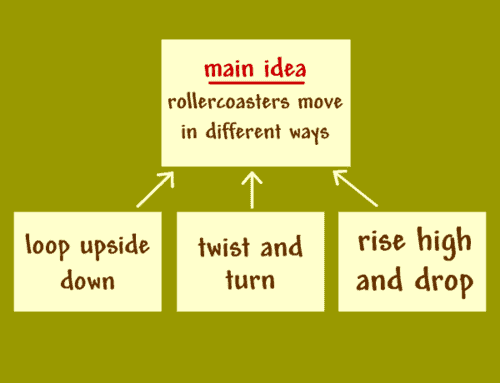
To efficiently identify the main idea in a piece of writing, students should first determine the text’s topic. Then, they will need to work out what it is the writer wants us to understand about that topic. This is the essence of how to identify the main idea.
Students should understand that the main idea may not always be explicit, and they may need to work hard to uncover precisely what the text implies. Regardless of whether the main idea is explicit or implicit, every paragraph will have the main idea. Students should understand that it can be located at the beginning, in the middle, at the end, or even be split up throughout the paragraph.
With perseverance and hard-earned experience, students can use various methods and, at times, a fusion of these methods to uncover the main idea with speed and accuracy. Soon they will be able to apply these methods to a broad range of texts over a wide range of lengths and complexities.
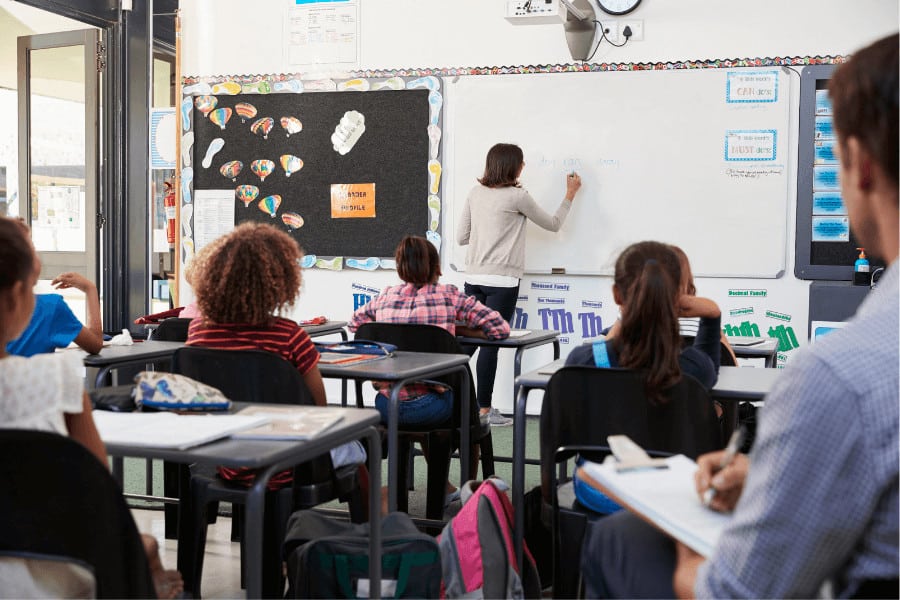
Teaching Resources
Use our resources and tools to improve your student’s writing skills through proven teaching strategies.
MAIN IDEA GRAPHIC ORGANIZER (FREE DOWNLOAD)
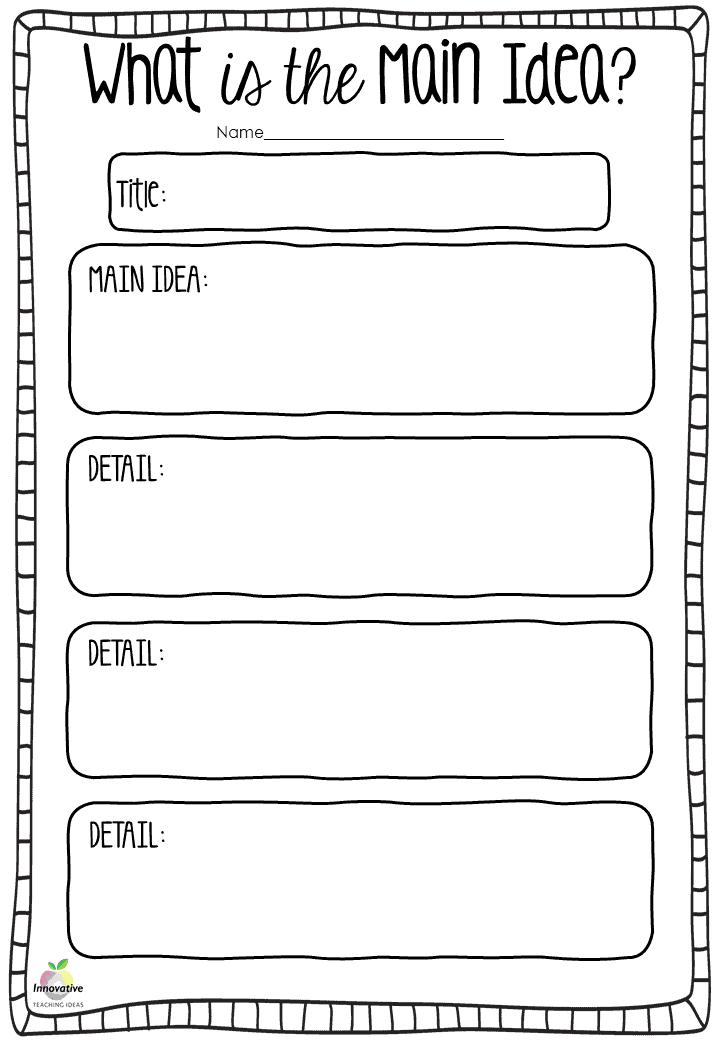
VIDEO TUTORIAL ON TEACHING THE MAIN IDEA
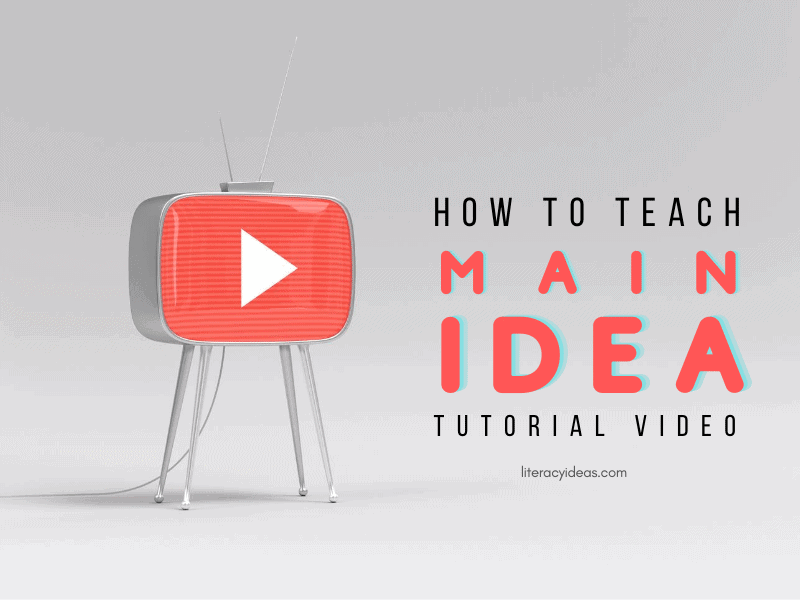
ARTICLES RELATED TO THE MAIN IDEA OF THE STORY
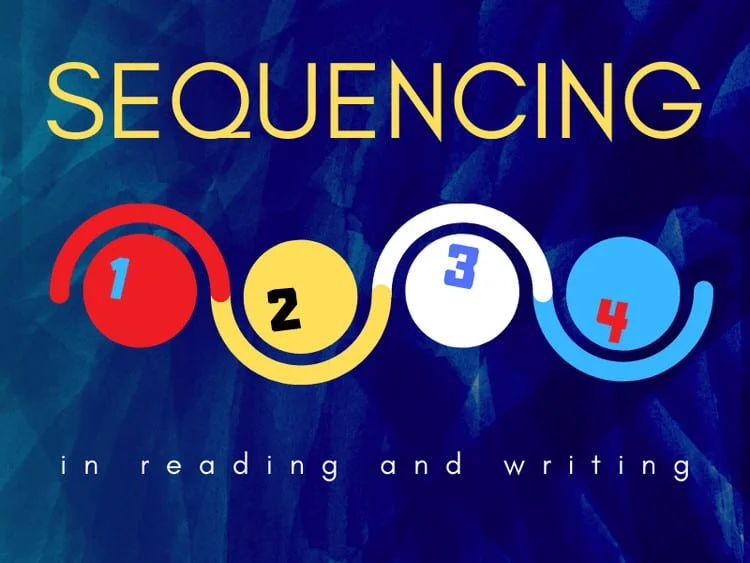
Sequencing events in reading and writing
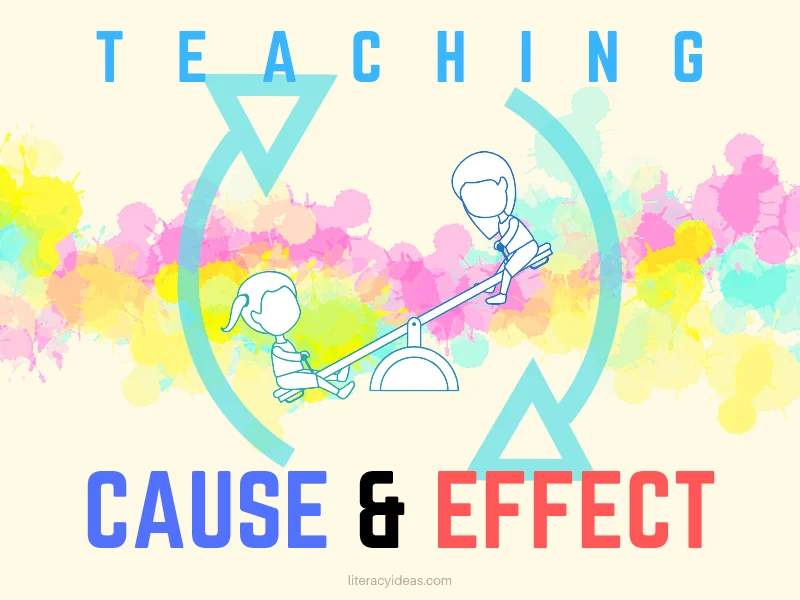
Teaching Cause and Effect in Reading and Writing


Elements of Literature
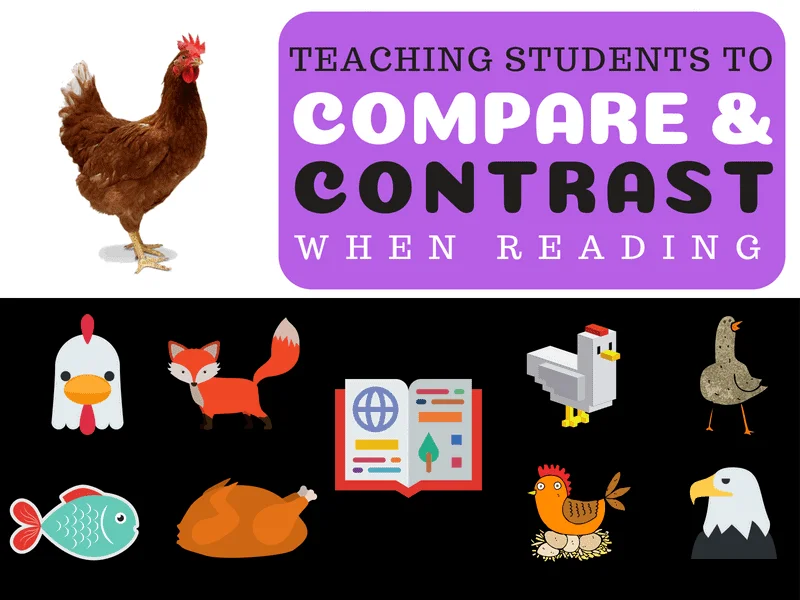
Teaching Compare and Contrast
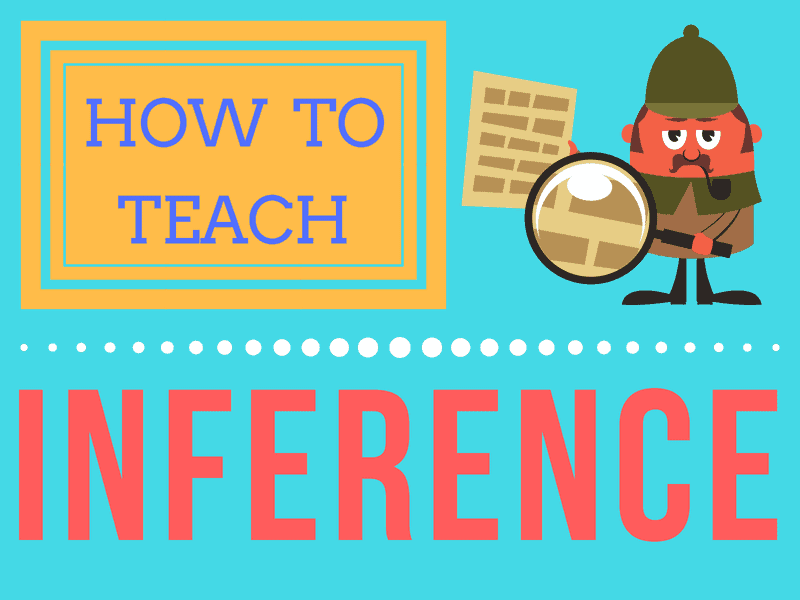
What Is An Inference? And How To Teach It.
popular searches
- Request Info
Finding the Main Idea
The main idea of a paragraph is the author's message about the topic. It is often expressed directly or it can be implied. Knowing how to find main ideas allows you to understand and think critically about what you're reading. And that benefits you regardless of your chosen profession.
Where Are The Main Ideas Found?
It is easy to identify a main idea that is directly expressed in the text. Main ideas are often found:
- at the beginning of paragraphs. The first sentence often explains the subject being discussed in the passage.
- in the concluding sentences of a paragraph. The main idea can be expressed as a summation of the information in the paragraph as well as a link to the information in the next paragraph.
The main idea is not always clearly stated. It is more difficult to identify a main idea when it is inferred or implied. It can be implied through other words in the paragraph. An implied main idea can be found in several ways.
- Several sentences in a paragraph can imply the main idea by introducing facts about the topic before actually stating the topic.
- Implied ideas can be drawn from facts, reasons, or examples that give hints or suggestions concerning the main idea. These hints will be clues leading you to discover the main idea in the selected text.
- Try the passage below to see if you can pick out the main idea. "To many parents, the infant's crying may be mainly an irritation, especially if it continues for long periods. But crying serves important functions for the child as well as for the parents. For the child, crying helps improve lung capacity and the respiratory system. Perhaps more important, the cry serves as a signal of distress. When babies cry, they indicate that they are hungry or in pain, and this is important information for parents."
Use the hints below to determine the correct main idea of this paragraph.
After reading a paragraph ask, "What point is the author making in this passage?"
Ask the following questions:
- Who - Does this passage discuss a person or group of people?
- When - Does the information contain a reference to time?
- Where - Does the text name a place?
- Why - Do you find a reason or explanation for something that happened?
- How - Does this information indicate a method or a theory?
How To Determine If I Have Selected the Correct Main Idea of a Paragraph?
If you are able to summarize the information in the passage in your own words, you have absorbed the correct main idea. To accomplish this goal, try the steps listed below after reading a short section of your textbook.
- Write a short summary in your own words about what you have read.
- Does your summary agree with this general topic?
- Does your summary contain the same ideas being expressed by the author?
- Could you write a headline (or textbook subheading) that would express your summary in less than five words?
If you are able to rephrase your choice of a topic sentence into a question and then determine if the passage answers your question, you have been successful at selecting a main idea.
Other Writing Resources
Enhance your academic writing skills by exploring our additional writing resources that will help you craft compelling essays, research papers, and more.

Your New Chapter Starts Wherever You Are
The support you need and education you deserve, no matter where life leads.
because a future built by you is a future built for you.
Too many people have been made to feel that higher education isn’t a place for them— that it is someone else’s dream. But we change all that. With individualized attention and ongoing support, we help you write a new story for the future where you play the starring role.

How to find the main idea
Determining the main idea of any text can be tricky. Let’s take a look at some helpful ways to zero in on it.

Author Taylor Hartley
Published January 19, 2024

Published Jan 19, 2024
- Key takeaways
- Think of the main idea as the point – The main idea is the primary argument or claim discussed by the author, around which all other supporting details and explanations revolve.
- Make sure you read the full text – You can determine the main idea by reading the full text, annotating its key points, summarising, and looking for any repeating ideas or statements.
- There are a few key questions to ask – While reading, it’s always important to look for the Who, What, Where and Why. These details will help explain why the author believes what they do.
Table of contents
What exactly is the main idea?
How to find the main idea in five easy steps.
- Questions to ask when trying to find the main idea
- Watch out for distractors
The main idea of a text can be a difficult thing to nail down, but it’s the most important detail of any passage you come across. As you travel along your journey towards mastering reading comprehension , you’ll need to build a habit of figuring out what the main idea is. Once you’ve accomplished that, you’ll have a better chance at consistently understanding even the most complicated of paragraphs.
The main idea is the central argument or point a paragraph is trying to communicate. It’s often the first claim an author makes when they begin their work but it can also be formed based on key details and facts dispersed throughout the body of a paragraph, too. Think of the main idea as the anchor of a paragraph, holding the passage steady and providing a foundation for other important points.
Is there a difference between the central idea and the main idea?
You might be a bit confused if you discover people referencing a “central idea,” of a paragraph or essay. But fear not! The central idea and the main idea are one and the same. The central idea represents the same key talking points and details as the main idea–the primary argument an author is trying to make.
Is there a difference between a supporting detail and a main idea?
Even though the central idea and the main idea are the same, there are a few differences between the main idea and it various supporting details. Supporting details are another important part of reading comprehension, as they provide some much needed context, or explanation of the overall main idea.
A supporting detail might go into greater detail on a specific topic, and give you a bit more understanding of the main point the author is trying to drive home. However, these supporting details don’t exist as their own main ideas, they’re simply there to support the main idea and reinforce it.
Now that you have a basic understanding of what the main idea is, you’ll need to start learning ways to identify it when you encounter it in the wild. Follow along as we walk through some helpful tips on pinpointing the main idea of a passage.
1. Identify the topic.
One of the first tools you can use for locating the main idea is referencing the title of a paper or any subtitles used throughout. Titles are a great way of gaining a grasp on the central topic of an author’s argument. Take the title of this article, “How to find the main idea.” We can learn a lot about what a piece of writing is about by looking at its title.
2. Read the entire passage.
The second step in finding the main idea? You guessed it, thoroughly read the passage so you can get a firm handle on what it’s trying to say. You might be tempted to skim the writing to save time, but it’s important to read each sentence with intent so no details go unseen. Remember, even the smallest detail can provide you with the extra confidence and understanding you need to define the main idea.
3. Annotate as you go, underlining key points or ideas you see.
One helpful tip to help guide your understanding of the main idea is to annotate, or take notes, while you read the text. Doing this will give you a brief but helpful outline of the main points the passage makes. You can look back through your notes once you’re done reading and use them to solve the main idea puzzle. Remember to write down any details you find particularly impactful.
4. At the end, summarise the passage and what you think it’s arguing.
When you’re finished reading and annotating, use what you’ve learned from the text to form a summary of the entire passage. Your summary should include the main arguments and supporting evidence the author used to get their point across. By creating a summary, you’ve reinforced the main ideas of the text in your head, making it easier to discover what the author is really trying to say.
5. Read the first sentence and last sentence and look for repeating ideas in your annotations.
The main idea is often expressed in the first few lines of a text and reiterated in the closing lines of a passage. Knowing this, take a good look at both the first and last lines of a paragraph, and see if there are any recurring details or statements within each one. If there are similarities, there’s a good chance that these statements reflect what the main idea is.
Questions to ask when trying to find the main idea
Although it’s important to take note of each detail you come across in a passage, some can be more valuable when trying to determine the main idea. These details are key parts of the summary you’ll need to create. They’re known as the Who, the What, the Where, and the Why.
The Who relates to the subject of the text; the person or thing the passage is describing. It’s most often a person or group of people, but it can also range from animals to robots to insects! Identifying the Who is an important part of grasping the main idea, because you’ll need to determine just who the author is writing about if you’re going to figure out what the author is trying to say about them.
What is happening within the passage? What actions are taken by the Who? These actions, or reactions, are known as the What. This is the meat of the paragraph, the behaviours or movements of characters and people that the author uses to describe what’s happening in their writing.
The When is another important detail you’ll need to define as you discover the main idea. The When of a passage is the time period the paragraph itself takes place in or references. Think of the When as a date on a calendar. The Who and What you’ve already defined, but on what date – or at what time of the day – do they appear?
What is the setting or location of the paragraph? Where does the action take place? Is it in a specific state or country, or maybe a specific city or neighbourhood? By defining the Where, you’ll be able to determine how the setting influences the main idea. Maybe there are specific laws or rules tied to the setting that affect the main idea, or maybe the geography of the setting affects what the author is trying to say about the region and the people who live in it. No matter what the Where is, you need to define it so that you can understand how the setting of a passage relates to the main idea.
And most importantly, why?
The Why is perhaps the most important piece of the main idea puzzle. To define the Why, ask yourself how the author explains the reasoning behind their argument. Why do certain things work the way they do? Why do people act in the ways that they do? The answer to these questions are within the text, and they’re probably the most important facts regarding the main idea. If you can define the Why, or the explanation for why the author thinks the way they do, you can find the main idea.
Watch out for distractors
As you work your way through a multiple-choice test, reading comprehension questions will normally ask you to pick the main idea out from a collection of possible answers. The creators of these tests can be tricky, and might try to mislead you with answers that don’t actually align with the true main idea.
Because of this, it’s important that you read the passage carefully, paying close attention to the little details throughout that might clue you in to the main idea’s meaning. Make sure to come up with your own main idea, and don’t rely on the answers provided to you by the test. Wrong answers are often either too narrow in their description of the text, too broad, or make claims that are contrary to the argument posed by the author.
Creating your own outline of the passage once you’ve carefully read it will help you summarise the text, pick out its key arguments, and determine the best answer for what the main idea is.
Explore the main idea with DoodleEnglish
DoodleEnglish is an app that’s filled with thousands of fun, interactive exercises covering grammar, punctuation, spelling and more!
Designed by teachers, it creates each child a unique work programme tailored to their needs, boosting their confidence and skills in English. Try it for free today!

FAQs about the main idea
The main idea should include the main talking points of a paragraph. Think of it as a summary of the author’s writing that represents their central argument. The main idea includes the key statements, facts, or opinions the author chooses to include that embody what they’re trying to say.
There are several strategies you can use to help you find the main idea. Techniques such as looking at the title of the work, or any subtitles, writing down your own summary of the text, looking at the first and last sentences of a paragraph, and identifying recurring ideas are ways to discover the main idea. You can also take notes throughout your reading so that you have a brief outline of key details.
Yes, it’s extremely important for you to read the passage in its entirety if you want the best chance at understanding its main idea. You may feel tempted to skim or speed-read your way through an essay, but be wary that you might miss certain details or key ideas that could have helped you define the central argument. The best way to go about defining the main idea is to read each sentence intently.
The central claim and the main idea are synonymous with one another, meaning they represent the same thing. If you’ve identified the central claim of a passage, you’ll be happy to know that you’ve also found the main idea!

Try DoodleEnglish for free!
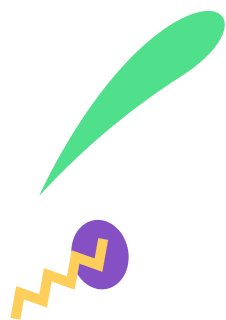
Related posts
What are speech marks?

From novels to news reports, speech marks are used everywhere
Spelling activities for KS2

There are lots of fun ways you can liven up spelling practice!
What is SPaG? A guide

SPaG is a really important concept in English, but what does it mean?
What we offer
Quick links
All rights reserved.

Book a chat with our team

I’m new to Doodle

My school is already using Doodle

Are you a parent, teacher or student?
Get started for free!
Maths information pack
We ask for your contact info so we can send our info pack directly to your inbox for your convenience, exam prep information pack, case studies information pack, information pack, we ask for your contact info so that our education consultants can get in touch with you and let you know a bit more about doodle., student login, which programme would you like to use.
DoodleMaths
DoodleTables
DoodleEnglish
DoodleSpell
If you’d like to use Doodle’s browser version, please visit this page on a desktop.
To log in to Doodle on this device, you can do so through our apps. You can find out how to download them here:
How To Find The “Main Idea” Of A Text
The main idea , sometimes referred to as the central idea, is the most important thought of a text. From elementary school on up, we’re taught to discuss and analyze pieces of writing in terms of the main idea . Knowing how to identity the main idea in a piece can help us become better readers—and writers.
What is a main idea?
The majority of details in a text reference the main idea . Basically, it’s the topic that comes up over and over again in an article, book, or other piece of nonfiction. The term main idea is generally associated with informational, nonfiction texts like newspaper articles.
The main idea tells the reader what the paragraph, article, or other section of a text is going to be about. Often the main idea is explicitly provided in a declarative statement, which is a statement of fact ending in a period:
Every year, hundreds of children prepare to compete in the Scripps Spelling Bee. Along with their family members, these would-be competitors memorize thousands of dictionary entries. They are hoping to win as much as $52,000. Of course, they are also hoping for bragging rights!
Every sentence in this paragraph is about the hundreds of children who compete in the Scripps Spelling Bee . The main idea is explicitly stated in the first sentence of the paragraph. The following sentences give specific details about these contestants—how they prepare and what they hope to win.
Here’s another example in which the main idea is explicitly stated in the paragraph. In this case, though, the main idea is stated at the end of the paragraph instead of the beginning:
There is a ceaseless murmur of people practicing tricky words. Contestants pace the hallway with their parents. A voice comes over the loudspeaker announcing that there are 10 minutes until the start, causing a ripple of excitement to go out. It is the first day of the Scripps Spelling Bee and the tension is electric.
Every sentence in the paragraph describes a detail about the morning of the first day of the Scripps Spelling Bee. The details give a sense of how tense the morning is. That’s how we know that the last sentence of the paragraph, It is the first day of the Scripps Spelling Bee and the tension is electric , is the main idea of the paragraph.
But what if the main idea is not so obvious?
Sometimes, the main idea is shown implicitly . In those cases, you have to find the main idea by determining what the majority of details in the paragraph or section are about. For example:
The first step to making a pie is to make the dough. While the dough is chilling, you can make your filling. Next, roll out the dough and bake it a little bit. Finally, add the filling and bake your pie.
None of these sentences say explicitly what the main idea is. However, every single sentence is about how to make a pie . That is the main idea of this paragraph.
Just like paragraphs have main ideas , paragraphs build to make the main idea of an article. Sometimes, the main idea of an article is stated in the first or second paragraph. Often, it’s implicit, meaning a majority of the paragraphs are about a particular topic.
Knowing the main idea is important for writing a summary of a text. A good summary of a nonfiction text includes the main idea , as well as the major contributing details:
The article is about the annual competitive spelling bee in the United States. First, the organizers are profiled. Then, the article details the lives of the children who are preparing to enter the spelling bee and the people who live with them. Finally, we learn what the day of the competition itself is like.
What is a theme?
While finding the main idea of a text is typically associated with informational, nonfiction texts, there are associated concepts for argumentative texts and fictional texts. When reading an argumentative text, you might be looking for the main argument . For a fictional text, you might be looking for a theme .
The process for finding the main idea , the main argument , or theme of a text is roughly the same. You have to pay attention to what a majority of details in a paragraph or the majority of paragraphs in an article are about. Sometimes, this is given explicitly.
Often, you have to read between the lines to figure it out. There’s no novel that just states, “the theme of this novel is how to overcome hardships.” Instead, the protagonist learns to face their fear of spelling with lots of practice throughout the story. That’s how we know that overcoming hardship is the theme shown in the story.
Whether the main idea is implicit or explicit, expect to see questions about main ideas when it comes to reading informational texts in school. These questions are asking you to look for what the majority of details in the paragraph or section of text are all about.
Once you know what you’re looking for, finding the main idea becomes a lot easier. After all, it is the core of what the author is trying to tell you—the reader—about.
Want more fun word activities and more tips to help with your kids’ homework? Sign up for Dictionary.com right in your inbox!

Ways To Say
Synonym of the day

COMMENTS
The main idea is the point or message - what an author presents and what a reader takes from a text. Searching for that main idea is a very important activity in understanding a text. It is usually found in the opening paragraph when the author is setting up the topic and expressing the thesis.
Finding the main idea is critical to understanding what you are reading. It helps the details make sense and have relevance and provides a framework for remembering the content. Try these specific tips to catch the main idea of a passage.
Main ideas are often stated toward the start of a text, usually in an introductory paragraph. They are often repeated in fuller form toward the end of a text, usually in a concluding paragraph. Main ideas may be reinforced through headings, subheadings, and other forms of emphasis.
Whether we are talking about the main idea of a paragraph, a poem, a chapter, or a longer text, finding the main idea requires the reader to identify the topic of a piece of writing and then uncover what the writer wants us to know about that topic.
The main idea, thesis statement, and topic sentences all provide structure to an essay. It is important for both readers and writers to understand the roles of each of these in order to...
The main idea of a paragraph is the author's message about the topic. It is often expressed directly or it can be implied. Knowing how to find main ideas allows you to understand and think critically about what you're reading.
Instructor Andrew Sedillo. View bio. Learn about the main idea, or main point, and supporting details of a story. Learn to identify the main idea and supporting details and review an...
The main idea is NOT a new or related idea. The main idea must come from the passage itself. On main idea questions, you might see a choice that says something you know is true because you learned it in school, or read it somewhere else.
The main idea should include the main talking points of a paragraph. Think of it as a summary of the author’s writing that represents their central argument. The main idea includes the key statements, facts, or opinions the author chooses to include that embody what they’re trying to say.
The term main idea is generally associated with informational, nonfiction texts like newspaper articles. The main idea tells the reader what the paragraph, article, or other section of a text is going to be about.